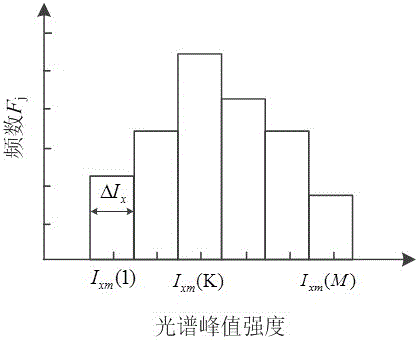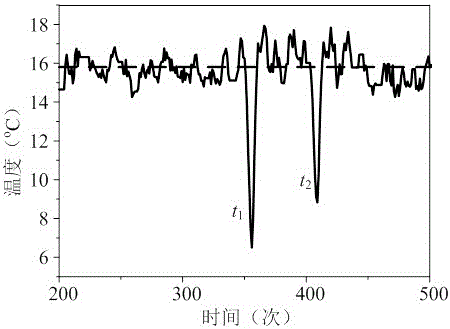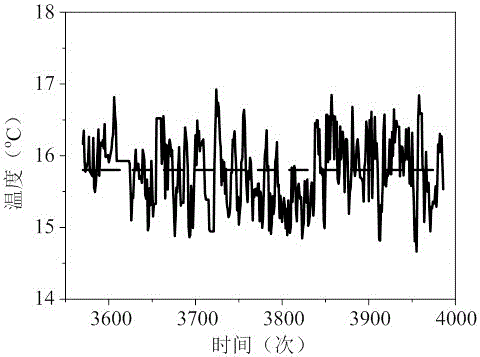Filtering method based on frequency distribution principle
A frequency distribution and principle technology, applied in material excitation analysis, Raman scattering, etc., can solve the problem of large fluctuation of signal intensity, and achieve the effect of good real-time performance, convenient implementation and interference elimination.
- Summary
- Abstract
- Description
- Claims
- Application Information
AI Technical Summary
Problems solved by technology
Method used
Image
Examples
Embodiment Construction
[0024] A kind of filtering method based on frequency distribution principle of the present invention, it comprises following concrete steps:
[0025] Step (1): Continuously collect multiple sets of Raman spectral data I 1 (λ), I 2 (λ)..., to obtain the peak intensity I of each group of spectra respectively imax , put N consecutive I imax The value is regarded as a queue and stored in the array I x ;
[0026] I x (i) = [I 1max I 2max … I Nmax ], i=1,2,...N (1)
[0027] I in formula (1) x (i) is the array I x The i-th element of .
[0028] Step (2): the array I x Divided into M intervals, according to the array I x The maximum value of the data in I xmax and minimum I xmin to determine the partition spacing ΔI x ;
[0029] ΔI x = I x m a x - ...
PUM
 Login to View More
Login to View More Abstract
Description
Claims
Application Information
 Login to View More
Login to View More - R&D
- Intellectual Property
- Life Sciences
- Materials
- Tech Scout
- Unparalleled Data Quality
- Higher Quality Content
- 60% Fewer Hallucinations
Browse by: Latest US Patents, China's latest patents, Technical Efficacy Thesaurus, Application Domain, Technology Topic, Popular Technical Reports.
© 2025 PatSnap. All rights reserved.Legal|Privacy policy|Modern Slavery Act Transparency Statement|Sitemap|About US| Contact US: help@patsnap.com



